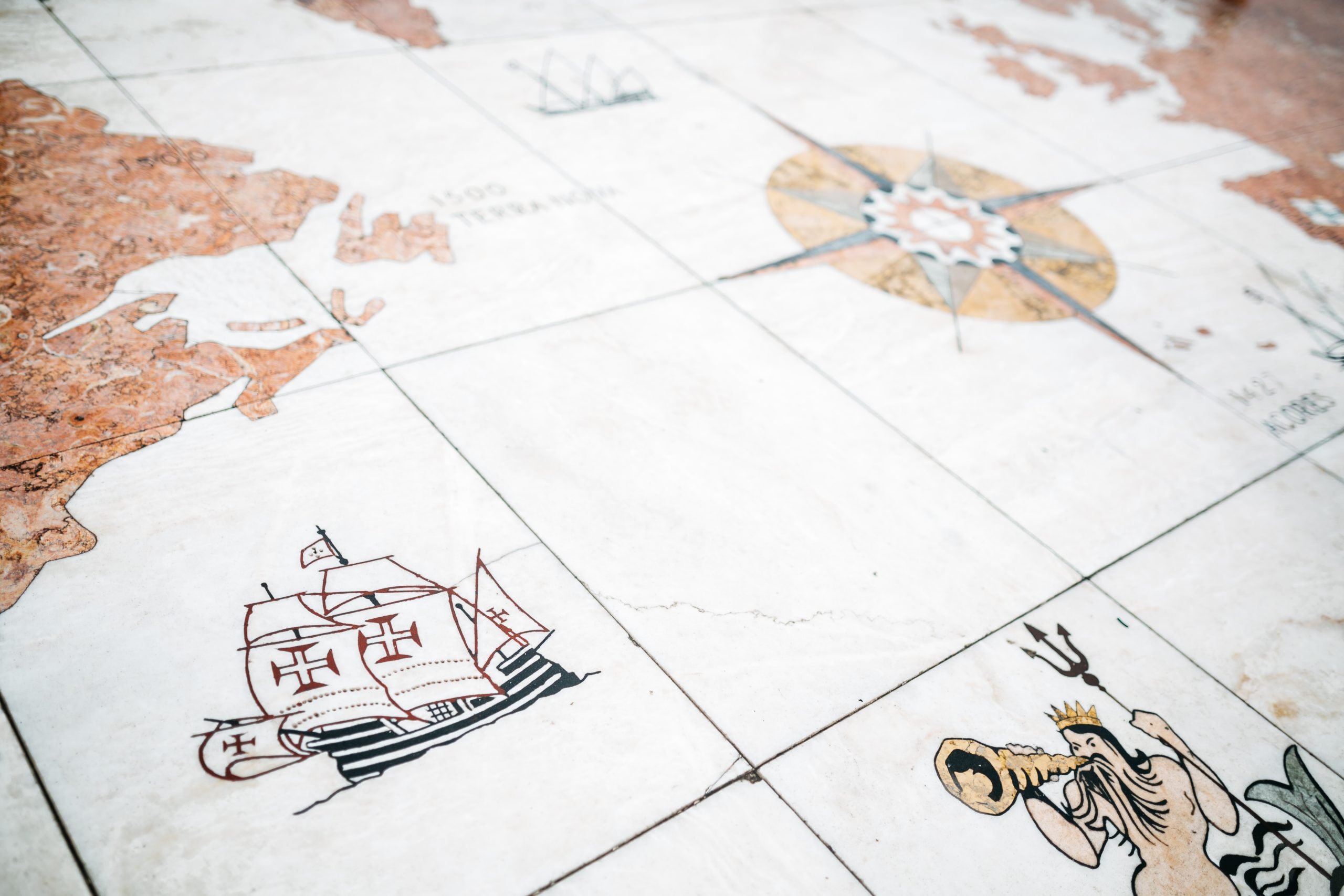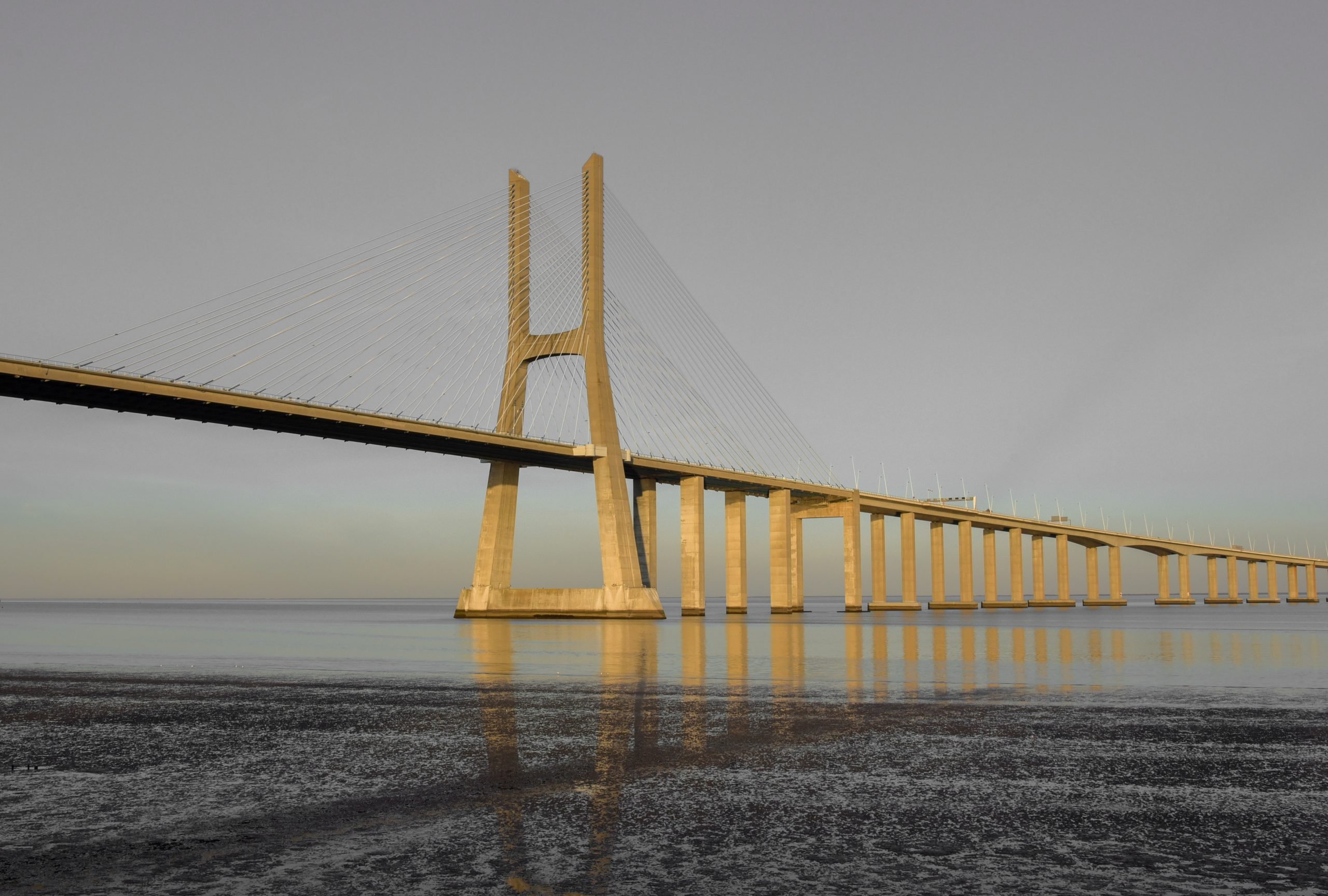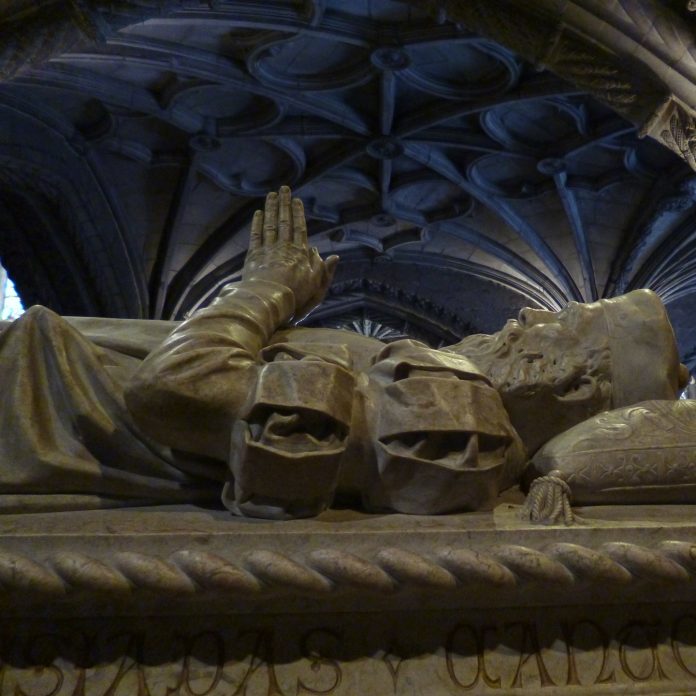Known for being the first European to reach India by sea and thus connecting, for the first time, Europe and Asia by maritime trade, Vasco da Gama, the 1st Count of Vidigueira, was a Portuguese explorer. His first voyage was the longest ocean travel in the world at the time and he was always briefly the Viceroy of India, before dying.
He is a controversial historical figure, with the explorer being known to have committed several atrocities and being a violent person, besides the consequences of his travels. Besides that, he is an unavoidable figure in History.
Early Life
Not much is known about Gama’s early life. He was born in the 1460s, he was the third son in a minor noble family. His father was a knight in charge of the Sines Fortress, in the Alentejo coast, and his mother was a noblewoman.
It is supposed that, due to his stature, he had a good education and, since he was living on the coast, he also probably learned about sea navigation.
By 15, he was familiar with the trading ships that were docked in the ports and by 20 he had already managed to become the captain of a ship. His career must have been very remarkable, since almost 20 years later, he would be sent to command one of the most historic voyages in the world.
The Historic Voyage

The well-known story starts in 1497. At the time the Muslims, especially the Ottoman Empire, held in their control the trade routes from the East, including India. This made all of Europe dependent on them since gold, spices and many other Eastern riches were well appreciated in all the continent, and they knew this so they charged high prices to the Europeans and for their ships to pass through their ports.
As a way to counterbalance this, the Portuguese king, King Manuel I, decided to send a fleet that would search for the maritime route to India and chose Vasco da Gama to lead it. This was to continue the work already started by Bartolomeu Dias, who was the first navigator to have rounded the Cape of Good Hope.
The explorer set sail in July with 4 ships from the port of Lisbon. Gama commanded the São Gabriel ship, Paulo da Gama, his brother, commanded the São Rafael, and there was also the caravel Berrio, and a storeship São Maria.
They travelled along the coast of Africa until he reached the South Atlantic, when they decided to adventure into the open sea, as a way to avoid unfavorable currents. When reaching the Southern part of Africa, in what is now Cape Town, the fleet passed through the Cape of Good Hope, probably the hardest part of the voyage as it had only been crossed one time before!
The navigator and his fleet continued to travel along the African coast, stopping in today’s Mozambique and Kenya for supplies, sicknesses and to ask for directions, even getting the help of an Arab navigator in one of their stops, that travelled with them and showed them the way to cross the Indian Ocean until they finally reached Calicut (now Kozhikode) in 1498.
Initially, the local Hindus welcomed the Portuguese, making them think they were Christians. But soon the mood soured when Gama’s gifts were considered cheap by the local ruler and the local Muslim traders understood the reason for their presence there and became hostile to the Portuguese. Gama thus had to leave without making a treaty with the locals.
This was a huge feat in world history. It is considered by many to be the root to today’s Globalization, as it initiated a global cultural, economic and historic connection as it had never existed before.
However, it also started the era of global imperialism and colonization, first with the full-blown conquest of territories by the Portuguese Empire and then by the other European powers. A conquest that would, with rare exceptions, encompass all parts of the world in one way or another, and would lead to awful creations and the subjugation of peoples.
In fact, Gama himself had the fame of being violent with the natives and of taking hostages, something that continued to happen with those that followed him. The tactic employed by the Portuguese was then adapted by the rest of the Europeans that set foot on the Indian subcontinent and throughout the world in their quest for lands to colonize.
Finally, two years after setting sail, in 1499, the fleet arrived home, with at least 54 out of the 170 men that made the fleet… Vasco da Gama’s own brother died on the road… But after 300 days spent at sea and 24,000 miles travelled, the surviving men were considered heroes and had made history, for better or for worse.
They had made the longest ocean travel until then and had just boosted the Portuguese economy immensely, since they now had the monopoly over the Indian spice routes. And with the known riches of the Orient came new ones, like spices such as pepper and cinnamon.
The King thus praised Gama’s success, and gave him huge sums of money and the title of admiral.
Second Voyage
Other expeditions had been sent to India before, but in 1502 Gama was asked to be a part of a second expedition, which he accepted.
This voyage had 10 ships and was much more hostile than Gama’s first one. When passing through Kilwa, in today’s Tanzania, the Portuguese threatened the leader and forced him and the population to swear loyalty to the king of Portugal, creating trading posts throughout the East African coast. Also, when he arrived at Calicut, they bombarded the port, killing many Muslim traders and forcing the Calicut’s ruler to reach a treaty, and in Cochin he fought with the Arabs, making them retreat.
The fleet arrived to Portugal in 1503, having gotten much closer to achieving a Portuguese empire in Asia and the Indian Ocean, on the backs of the native peoples of the region. This made Gama a vilified figure in all of India but a hero to the Portuguese, especially the upper class, being highly rewarded.
Later Life and Death
Gama married right after returning from his first travel to India and had 6 sons. He continued to work as an advisor to the King on Indian affairs for the next 20 years and was bestowed the title of Count of Vidigueira in 1519.
The explorer would return to India as Viceroy, in 1524. He would arrive in Goa and reestablish order in the Portuguese elite, who was filled with corruption, and to settle administrative problems.
He would then die of an illness on Christmas Eve of that same year, in Cochin, soon after arriving. He was buried in a local church, until 1539 when his body was taken back to Portugal.
Legacy
The legacy of Vasco da Gama is a very complicated subject, as it is seen by some as a hero and a discoverer and by others as an oppressor and a despot.
Discovering the maritime route to India was indeed a huge feat in world history, something that completely changed the world from then on. As said earlier, was a precursor to today’s Globalization, connecting far away peoples in many ways, but namely, economically (being this good or bad).
He also helped the Portuguese Crown start their long-lasting colonial empire, both through the finding and conquering of new land in the East and the creation of the much needed trading outposts (to support the long distance ocean trade), subsequently creating a huge economic growth in the country. This then would open the door for the rest of Europe to do the same.
He is undoubtedly one of the main figures in the history of the Discoveries, together with other names such as Henry the Navigator, and his explorations are celebrated in several parts of the world.
The Portuguese have throughout the years dedicated writings, monuments and ships to the explorer. The Portuguese national epic, ‘Os Lusíadas’ by Luís Vaz de Camões, known and a mandatory study in all of Portugal, is about Vasco da Gama’s voyages, adding to it elements of the Greek epics. A memorial to Vasco da Gama is also in the Portuguese National Pantheon and a coin was made in 1969 to celebrate the 500th anniversary of Vasco da Gama’s birth.
Many other places in Lisbon are named after him, like the Vasco da Gama Bridge, the Vasco da Gama Tower and the Mall ‘Centro Comercial Vasco da Gama’. The Oceanarium has a mascot named “Vasco”, after the explorer, who is a cartoon diver.

The Portuguese Navy has a class of frigates named after the explorer, existing 3 of them with the first one also having his name, and the Portuguese government also erected 2 monuments who serve as navigational beacons in the Cape of Good Hope, the ‘Dias Cross’ and the ‘Gama Cross’, to celebrate the first modern European explorers to reach the Cape. If you line up the 2 monuments, they point to Whittle Rock, a large navigation hazard in False Bay.
We can also see the mysticism created around his figure in the Portuguese mentality by the poll ‘Os Grandes Portugueses’, a poll made around Portugal to find out who the Portuguese thought were the greatest Portuguese of all time. Vasco da Gama was the only explorer on the final.
Outside Portugal there were also many celebrations of the explorer. In 1865, the grand opera ‘L’Africaine: Opéra en Cinq Actes’, by Giacomo Meyerbeer, includes the character of Vasco da Gama, but the events portrayed are fictional. The famous tenor Plácido Domingo played the role of Gama in 1989. Another opera, this one by the 19th century composer Louis-Albert Bourgault-Ducoudray, is made on the life and explorations of Gama and bears his name.
Goa’s largest city is named after him, as is a crater on the Moon. In Brazil, 3 soccer clubs bear his name and one more in Goa. In Kochi, Kerala, stands a church called ‘Vasco da Gama Church’ and in Cape Town, besides the Gama cross, there is also a suburb named ‘Vasco’ after the famous sailor.
On the other hand, there are many bad depictions of him, especially in pop culture (and on the minds of many of the ex-colonial peoples). Hugh Masekela, a South African musician, recorded a song named ‘Vasco da Gama (The Sailor Man)’ and ‘Colonial Man’, an anti-colonialist song containing the words “Vasco da Gama was no friend of mine”, both part of his 1976 album ‘Colonial Man’. Vasco da Gama is also a character in the Indian movie Urumi, which depicts the atrocities of the Portuguese (and Gama) in India.
His legacy will always be a source of controversy, but his impact, even more than 500 years after his famous voyage, on the world history is still felt. He gave Portugal a main role in European economy and politics and opened the path to the creation of the Portuguese Empire, with its outposts and colonies all throughout the world, giving to the country what many consider its “glory”. But the path of pain, suffering, death and exploitation that he and his legacy brought can never be forgotten, with consequences to this day.
However you look at it, we cannot talk about European exploration and colonization without telling his story, so we can better understand the world that surrounds us and how it is the way it is.



I am reading this article from cochin and i a have an indo Portuguese origin i am proud of that